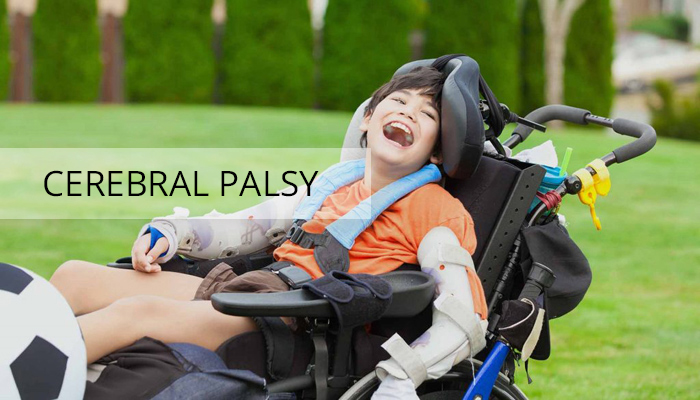Cerebral Palsy (CP) refers to a group of neurological disorders that appear in infancy or early childhood and permanently affect body movement and muscle coordination. Its caused by damage that occurs to the developing brain, most often before birth. Symptoms appear during infancy or preschool years and vary from very mild to serious.

Cerebral palsy is caused by abnormal development or damage to the parts of the brain that control movement, balance and posture. Most often the problems occur during pregnancy but may occur during childbirth or shortly afterwards.
There are four main types of CP:- Spastic Cerebral Palsy - is the most common.People have stiff muscles and awkward movements.
- Dyskinetic Cerebral Palsy - is characterized by slow and uncontrollable writhing or jerky movements of the hands,feet,arms or legs.
- Ataxic Cerebral Palsy - affects balance and depth perception.Children with ataxic CP will often have poor coordination and walk unsteadily with a wide based gait.
- Mixed types of CP - refers to symptoms that don't correspond to any single type of CP but are a mix of types.
Many factors can lead to changes in brain development, include:
Genetic factors:
- Maternal infections -that affect an unborn baby
- Stroke- which interrupts blood supply to the developing brain
- Bleeding into the brain- In the Womb or as a newborn
- Traumatic head injury to an infant
- Infant infections that cause swelling in the brain
- Lack of oxygen to the brain
Risk factors include:
- Maternal health
- Certain infections or toxic exposures during pregnancy can significantly increase cerebral palsy risk to the baby
- Cytomegalovirus
- German measles known as rubella
- Herpes
- Syphilis
- Toxoplasmosis
- Zika virus infections
- Intrauterine infections
- Exposure to toxins
Infant Illness
- Bacterial meningitis
- Viral encephalitis
- Severe jaundice
- Bleeding into the brain
Factors of pregnancy and birth:
- Low birth weight
- Multiple babies
- Premature birth
- Delivery complications
The main symptoms of cerebral palsy are problems with movement, coordination and development. The severity of symptoms varies from child to child
Possible symptoms include:
- Delays In reaching development milestones
- Seeming too stiff or too floppy
- Weak arms or legs
- Jerky or clumsy movements
- Random , uncontrolled movements
- Tremors
- Walking on tiptoes
- Feeding and swallowing problems
- Problems with speaking and communication
- Scoliosis
- Urinary incontinence
- Learning disabilities
